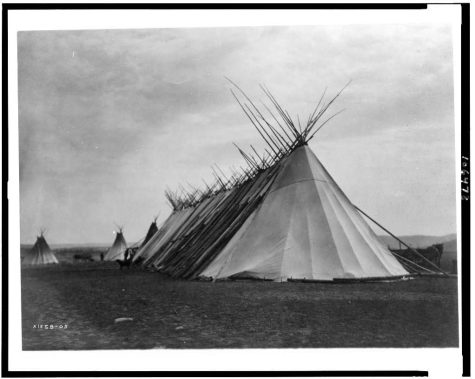Environmental groups sue federal government over Snake River dams plan
November 5, 2020
In a recent intention to sue letter, eleven environmental groups outlined what they say is the federal government’s illegal behavior in regards to dams on the Snake River in Washington State. The letter, submitted on Oct. 23, gives the federal government 60 days to modify their course of action before the lawsuit will be filed in federal court.
There are four dams along the Snake River, which begins in the Rocky Mountains and travels through Idaho and Washington, ultimately joining the Columbia River.
A 2016 ruling required the federal government to create a new plan for the management of the lower Snake River dams based on an Environmental Impact Statement (EIS). The EIS was released in July 2020 and the final decision was adopted on Sept. 30. The alternative adopted included new fish hatcheries or enhanced strategies to help fish pass safely through, rather than breaching or entirely removing the dams.
The environmental groups, including Earthjustice and the Sierra Club, claim that the new plan is in violation of the Endangered Species Act (ESA) because it would be detrimental to endangered salmon and steelhead fish populations, and that it is not substantially different from plans previously rejected by the federal courts. This is the sixth round of litigation over dams in the Columbia River system.
The agencies that manage the Columbia River dam system (the Bonneville Power Administration, the Army Corps of Engineers and the Bureau of Reclamation) were required to research alternatives to protect endangered fish in relation to the dam. Federal agencies are required to research all new environmental policies through the National Environmental Policy Act (NEPA).

Environmental Studies-Politics major and senior George Jutras said that he was disappointed with the way the government agencies involved in the EIS researched the option that they chose.
“The NEPA process doesn’t actually mandate that the agency doing the environmental impact statement has to do anything and there’s very little accountability,” Jutras said. “The NEPA process just mandates that an agency goes through this process and so they have to collect all these alternatives to action and anybody can propose an alternative.”
Environmental Studies Professor Stan Thayne said the lower Snake River dams were unpopular from the onset. They were constructed in the 1960s and ‘70s, several decades after the Columbia River dams. At that point it was well known that dams have negative impacts on salmon and steelhead populations.
Salmon and steelhead travel from the Pacific Ocean to spawning grounds in the inland Pacific Northwest by traveling up rivers like the Snake and the Columbia. Young fish, called smolts, then travel back down the river to the Pacific. Dams on rivers like the Snake and the Columbia have historically disrupted salmon reproduction.

“These were hotly debated dams,” Thayne said. “By the time the Snake River dams were constructed it was quite well understood that the impact this would have on salmon and they were proposed and stalled several times.”
Environmental Studies-Biology professor Tim Parker said that salmon regeneration efforts have increased the number of fish and smolts passing through the dams, but it is hard to tell if they are surviving in the ocean. Researchers place small transponders called PIT tags into fish to track their journey through the Snake and Columbia rivers.
“We have a really good idea of what portion of fish that pass through one dam then actually survive and get to the next dam so there’s really good data on it,” Parker said. “We know what fish are surviving in the river but as soon as they go through that last dam then the ability to detect whether they’ve survived or not goes down.”

Environmental Studies-Psychology major and junior Anna Cadigan said she is concerned about the long-term effect that mitigation efforts will have on salmon populations. Salmon spawned at hatcheries lose some of their natural adaptations that make them successful in the wild.
“The fish can survive going up and down the dams in the immediate effects but there are a lot of larger long-term effects that are, in my opinion, really being ignored by the Corps of Engineers and the federal decision to keep the dams in place,” Cadigan said.
Cadigan and Jutras both took Thayne’s course “The Politics of Salmon” last year. They both cited a field trip they took to participate in a flotilla organized by Nez Perce activists as particularly meaningful. The Snake River travels through Nez Perce territories.
The Nez Perce have been involved in previous rounds of litigation surrounding the dams, but are not a party in this suit. Salmon is an essential first food for the Nez Perce and other indigenous inland Pacific Northwest groups. The 24 Pacific Northwest tribes that have signed treaties with the United States government are entitled to access to their traditional fishing ground and to 50 percent of the annual salmon harvest.

A large portion of the energy produced comes from hydroelectric dams on rivers like the Snake and the Columbia. The lower Snake River dams provide five percent of the Pacific Northwest’s energy needs.
Thayne said that much of the energy the lower Snake River dams produce is surplus. A study conducted by the Bonneville Power Administration shows that under normal water conditions the hydroelectric system would have continual surpluses.
Whitman students have previously been involved in the movement to remove the Snake River dams. A club called “Rethink Dams” was formed in 2015. The club participated in a flotilla on the Snake in 2015 and launched a petition to remove the dams in 2016.










Gene Spangrude • Nov 9, 2020 at 1:29 pm
Given the renewed interest in removing the four Lower Snake River Dams to aid in Salmon recovery, I recommend reading these two items, which provide some historical insight with respect to salmon numbers:
1. Chapman, D.W. (1986). “Salmon and Steelhead Abundance in the Columbia River in the Nineteenth Century,” Transactions of the American Fisheries Society, 115:662-670.
2. McDonald, Marshall (1894). Report of the United States Commissioner of Fish and Fisheries on Investigations in the Columbia River Basin In Regard to the Salmon Fisheries, Government Printing Office, Washington D.C.
Chapman’s article contains an interesting graph of “Salmon Catch (Harvest) vs time (from about 1870 to 1970) as well as a listing of numerous other interesting references related to Salmon.
McDonald’s 1894 report states that “there is no reason to doubt- indeed the fact is beyond question- that the number of salmon now reaching the head waters of streams in the Columbia River Basin is insignificant in comparison with the number which some years ago annually visited and spawned in these waters. It is further apparent that this decrease is not to be attributed either to the contraction of the area accessible to them or to changed conditions in the waters which would deter the salmon from entering them.”
To give some perspective, the problem of declining Salmon numbers was noted prior to 1900 and the first Lower Snake River project was completed in the early 1960’s; more than sixty years later.
Water temperature data was collected on the Lower Snake River from 1952 through 1956; which was therefore done under free-flowing conditions prior to the construction of the four Lower Snake River projects.
The data collection results are summarized in United States Geological Survey (USGS) Water Supply Paper #1253 (for the year 1952), USGS Water Supply Paper # 1293 (for the year 1953), USGS Water Supply Paper #1353 (for the year 1954), USGS Water Supply Paper #1403 (for the year 1955), and USGS Water Supply Paper #1453 (for the year 1956).
During this time, temperatures in excess of 65 degrees Fahrenheit were recorded on 304 days, which is approximately 17 per cent of the total observations, or about one out of every six made. Temperatures in excess of 70 degrees Fahrenheit were noted on 100 days, which is about 5 percent of the total observations, or about one out of every 20 made.
Even prior to the Snake River Dams, water temperatures of 79 degrees F were being noted on occasion, on the Lower Snake River; eleven (11) degrees warmer than the 68 degrees F value frequently used as a target to achieve.